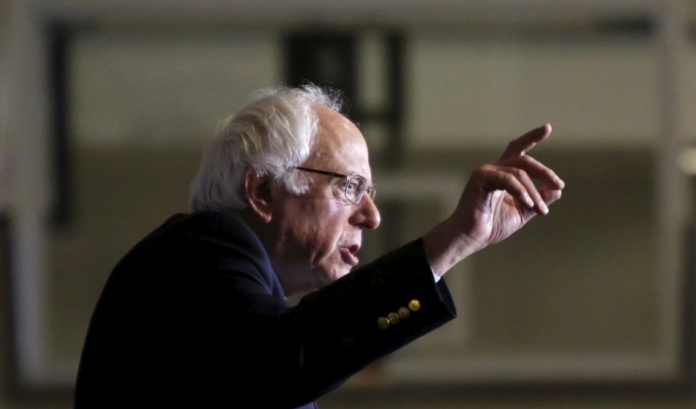
Bernie Sanders has been beaten worse than he was on Tuesday night. He picked up one win, in Rhode Island, out of five states and held Hillary Clinton under a 2-to-1 margin in her best state. It wasn’t a great night, and Clinton added to her delegate lead, but he’s had worse.
A few hours before, he’d sent out an email blasting Clinton’s past friendship with Donald Trump, even including the now-famous photo of Clinton at Trump’s (third) wedding. That email pledged that Sanders would “fight through the narrow path we have to the nomination” and that the campaign would “keep fighting hard for every vote and for every delegate . . . because that’s the only way to win this nomination.”
In his post-election statement, though, his tone had shifted.
“I congratulate Secretary Clinton on her victories tonight,” it said, “and I look forward to issue-oriented campaigns in the 14 contests to come.”
‘The people in every state in this country should have the right to determine who they want as president and what the agenda of the Democratic Party should be. That’s why we are in this race until the last vote is cast. That is why this campaign is going to the Democratic National Convention in Philadelphia with as many delegates as possible to fight for a progressive party platform. . . .”
That’s not an announcement that he’s dropping out, but it’s a quiet concession that he won’t win the delegates needed in order to best Clinton’s totals. By our math, before delegate totals are finalized, there aren’t enough delegates left on the map for Sanders to clinch a majority in the voting – and he’d need nearly twice as many delegates as Clinton to pass her thanks to her large lead. And that’s excluding superdelegates. His goal isn’t to triumph with delegates; it’s to get enough to twist some arms on the convention floor.
Why now, after all of this? The problem for Bernie Sanders is that little has changed.
At least not since February. To win the Democratic nomination — a once-improbable idea that, by the beginning of this year, had become shockingly plausible, Sanders needed to smooth out the furrows of party demographics. By Iowa, he’d significantly closed the yawning gap with Hillary Clinton that he faced a year ago, improving his support across the board. But the furrows remained; he did better with men and younger voters and Clinton did better with black and older ones.
There were three points at which that dynamic was challenged, and each time Clinton prevailed.
The first was in Nevada. After the two basically tied in Iowa and Sanders romped in New Hampshire — two largely white states — it wasn’t clear if Clinton’s so-called firewall with black voters would hold. Nevada was the first state where more than 10 percent of the electorate was black, a group that Clinton won by a 3-to-1 margin. She won the state narrowly, one of the rare times she won a caucus. Advocates for Sanders had hoped (and at times insisted) that black voters would move in his direction. The next contest, South Carolina, showed the extent to which they didn’t, beginning a string of huge wins for Clinton in the heavily-black South that built up her delegate lead for good.
After March 15 and Clinton’s wins in Ohio and Florida, it was clear that Sanders needed a miracle in order to shift the course of the campaign. He needed big wins in big states.
The second time the dynamic was challenged was last week in New York. Sanders had completed a string of victories that had favored him demographically and politically — a few caucuses, states with small black populations, open contests. The campaign insisted that it had momentum and, at one point, Sanders predicted that this momentum would power him through to a victory in his home state of New York. New York wasn’t like those other states, though — a closed primary in a state that was also Clinton’s adopted home. Sanders lost badly, a bit worse than the polling would have suggested.

